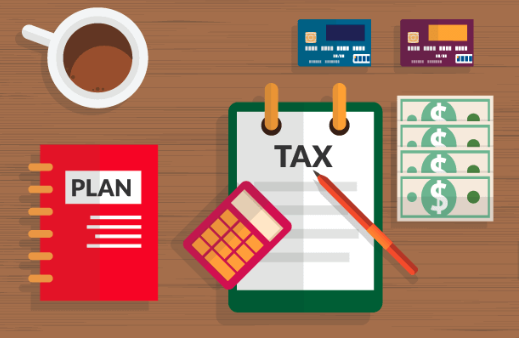As you probably already know, failing to file and pay your taxes is a federal offense. It can be punishable by a large fine and even potential prison time. If there’s any circumstance where you’ve skipped filing in the past or owe money on taxes from prior years, it’s important to get up to date as possible. By organizing your paperwork and forwarding the proper forms to the IRS, you can complete the process of paying them off. Here’s what you should know about filing back taxes.
1.Benefits of back taxes
You may be surprised to learn that there are actually benefits to filing back taxes sooner rather than later. Even if you can only partially pay off the tax, there can still be something gained from it. When you file and pay early, it can limit penalties, late fees, and interest charges. If you file within three years of the missed return due date, you may be able to get a tax refund. Waiting beyond that point will prevent you from receiving one. You should also be aware that if you’re self-employed, you won’t receive credits towards disability benefits or social security retirement. This is because the IRS requires a reported income in order to award these credits.
2.Determining the years that require filing
You need to make a list of all the tax years in which you have receipts of payments, refunds, or copies of filings. It can help you to narrow down the list of years that still need to be filed. If you’re unable to determine the years that you’ve filed and the years that you haven’t, you can contact the IRS, and they can inform you.
3.Find old tax documents
Your old tax documents will be required in order to file. One possible source for the information is the old company that you worked for. You can contact them to see if they have the information on record. W-2 forms are received from an employer at the end of each year to indicate your salary and wage information and the amount of tax you paid. 1098 forms are received if you’ve paid interest on student loans, other types of loans, or tuition. Lastly, you’re given 1099 forms for any other sources of income that you have.
4.Contact IRS for documents you can’t locate
Form 4506-T can be filed to request all relevant information related to your 1099s, 1098s, and W-2s. The form is located on the IRS website. You can either fill out the form and submit it online, or you can print it, fill it out, and then mail it to the proper address indicated. Keep in mind that you won’t receive duplicates of your 1099s, 1098s, and W-2s, but you’ll get all the information necessary to file your back taxes.
5.File early
If you desire to get access to a refund as quickly as possible, you’ll need to start planning to file your back taxes early. You need to do this early because it can take time to gather all the necessary documents. In the event you have to use Form 4056-T to request documents that you can’t locate, the IRS could take up to 45 days to give you that information. Additionally, it takes six weeks for the IRS to process your accurately completed past-due tax return.
6.Consider seeking a tax professional
Given that you’re filing back taxes, it’s in your best interest to make sure that the returns are being accurately filed the first time. A tax professional can help prevent you from making any errors that would be costly for you.
7.Filing state back taxes
Some states require that you file yearly taxes. Even though the penalties for not filing state taxes could be less severe than federal penalties, it’s important not to neglect them. Find the specific forms required by your state. You can locate them by contacting the comptroller’s office or checking with your state’s department of revenue website. Be sure to use the forms that were current for the years that you owed taxes. Tax documents change every year. Filing documents that are wrong could result in a misleading application.
8.Know the IRS’s late payment policy
If you can’t pay the full amount that you owe to the IRS, you can request an additional 60 to 120 days from the IRS to pay your account in full. You can call the number on their website, and no user fee will be charged. If you’re unable to pay your taxes in full within 60 to 120 days, you can seek a payment plan to pay your balance in installments.
9.Applying to set up a repayment plan
Payment plans can be requested after you’ve filed your back taxes. You might not even have to talk to an IRS representative, depending on how much you owe. If you owe $50,000 or less in combined taxes, interest, and penalties, a payment plan can be set up by visiting the Online Payment Agreement website. An immediate notification will be given to you if you’re application is successful. In a scenario where you owe between $50,000 to $100,000, you can apply for a payment installment if you can pay the balance off within 120 days.
Final Words
If you’re planning to apply for any kind of repayment plan, then only send a partial payment whenever you file your back taxes. If you’re unsure how much you should initially send, you can ask an IRS representative or a tax professional what a reasonable amount would be. Given that interest adds to your total each month, it’s probably in your best interest to pay a large amount of the debt as soon as you can. Taxes can be paid with money orders, checks, electronic funds withdrawal, credit cards, or debit cards. Be aware that paying with a credit or debit card carries processing fees.
The idea of paying off taxes you’ve skipped can seem daunting. But as long as you keep these basic tips in mind, the process can potentially be less difficult and beneficial to you financially. Additionally, you should consider using a tax calculator to help you out with calculating your taxes. You can learn more information on that at Taxfyle.





